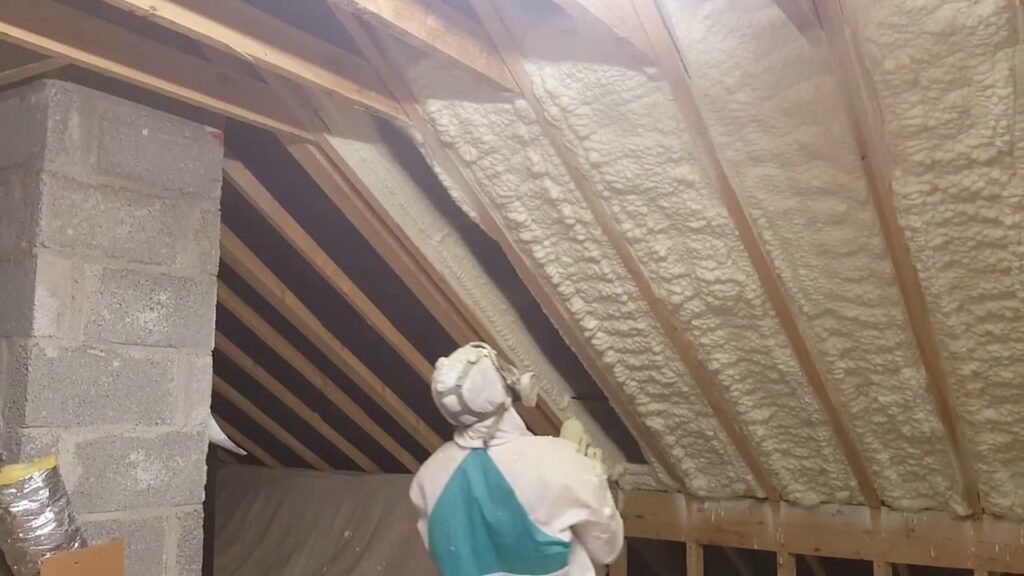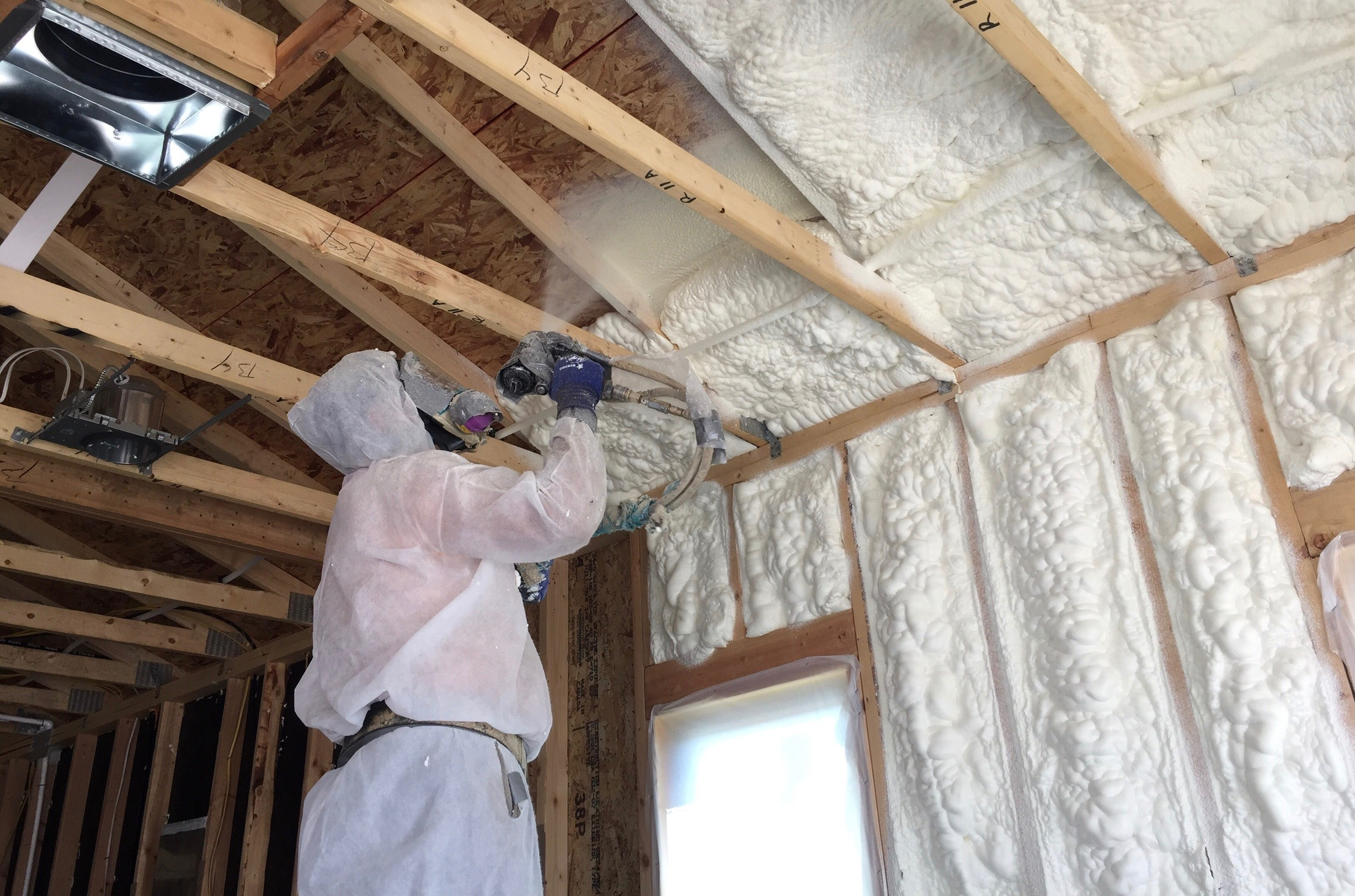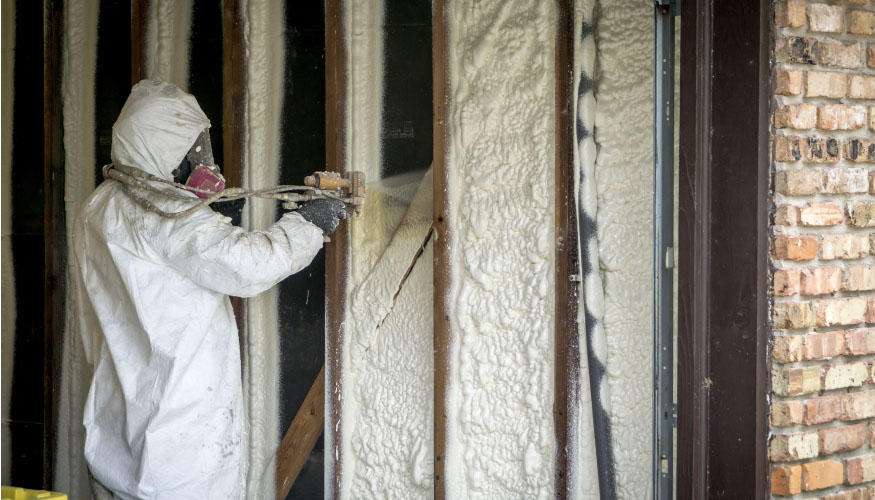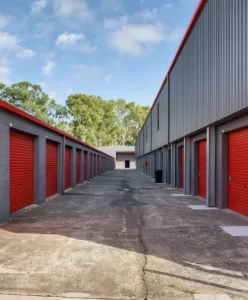Open-cell spray foam works exceptionally well in multi-level Leander homes because it provides superior air sealing and thermal protection across multiple floors while accommodating structural movement. This foam type expands to fill gaps between floors, around rim joists, and in wall cavities, creating a continuous thermal barrier that reduces energy transfer between levels. The flexible nature of open-cell foam makes it ideal for Texas homes that experience foundation settling and temperature fluctuations throughout the year.
Multi-level homes in Leander face unique challenges, including stack effect air movement, thermal bridging between floors, and varying temperature zones. Open-cell spray foam insulation contractor in Leander, TX addresses these issues by creating an airtight seal that prevents conditioned air from escaping through floor penetrations and reduces the workload on HVAC systems serving multiple levels.
Key Benefits for Multi-Level Applications
Open-cell spray foam delivers specific advantages when applied in homes with multiple stories. The foam’s expansion properties allow it to reach into tight spaces between floor joists and around penetrations that traditional insulation cannot access effectively.
Thermal Performance Enhancement The continuous insulation layer eliminates thermal bridging that commonly occurs at floor transitions in multi-level construction. This creates more consistent temperatures between floors and reduces hot and cold spots that plague many two-story homes.
Air Sealing Capabilities Stack effect becomes a significant issue in taller homes, where warm air rises and creates pressure differences between floors. Open-cell foam stops this air movement by sealing the building envelope at critical transition points.
Structural Accommodation Texas homes experience settling and movement due to clay soil conditions. Open-cell foam remains flexible after curing, maintaining its seal even when structural components shift slightly over time.
Application Techniques for Multi-Level Homes
Proper installation requires specific techniques to ensure coverage across multiple levels. Professional installers follow systematic approaches that address each floor level’s unique requirements.
Floor Transition Sealing Installers focus on rim joist areas where floor systems meet exterior walls. These locations represent major thermal weak points in multi-level construction. The foam expands to fill irregular spaces between framing members and creates an unbroken thermal barrier.
Penetration Management Multi-level homes contain numerous penetrations for plumbing, electrical, and HVAC systems that run between floors. Open-cell foam flows around these penetrations and hardens to create permanent seals that prevent air leakage.
Bonus Tip: Schedule installation during mild weather conditions (60-80°F) to optimize foam expansion and curing performance.
Technical Specifications
| Property | Open-Cell Specification | Performance Impact |
|---|---|---|
| R-Value per inch | 3.5-3.8 | Moderate thermal resistance |
| Density | 0.4-0.6 lb/ft³ | Lightweight, flexible structure |
| Air Permeability | <0.02 L/s-m² @ 75 Pa | Excellent air sealing |
| Vapor Permeability | 16+ perms | Allows moisture transfer |
| Expansion Ratio | 100:1 | Fills complex cavities |
| Service Temperature | -40°F to 240°F | Suitable for Texas climate |
Comparison with Alternative Insulation Methods
| Insulation Type | R-Value/inch | Air Sealing | Cost per sq ft | Moisture Handling |
|---|---|---|---|---|
| Open-Cell Spray Foam | 3.5-3.8 | Excellent | $1.50-2.50 | Breathable |
| Closed-Cell Spray Foam | 6.0-6.5 | Excellent | $2.50-4.00 | Vapor barrier |
| Fiberglass Batts | 3.1-3.4 | Poor | $0.50-1.00 | Moisture sensitive |
| Cellulose Blown-in | 3.2-3.8 | Moderate | $0.75-1.25 | Settles over time |
Climate Considerations for Leander Area
Leander’s climate zone 2A designation requires specific insulation strategies for multi-level homes. The area experiences hot, humid summers with mild winters, creating year-round cooling demands that make air sealing critical for energy efficiency.
Humidity Management Open-cell foam’s vapor permeability allows moisture to move through the insulation rather than becoming trapped within wall assemblies. This characteristic prevents condensation issues common in air-conditioned homes during humid Texas summers.
Temperature Fluctuations Daily temperature swings in Central Texas can exceed 30 degrees, causing building materials to expand and contract. Open-cell foam maintains its sealing properties through these cycles better than rigid insulation materials.
Market data shows that properly insulated multi-level homes in the Austin metro area, including Leander, see energy savings of 20-40% compared to homes with traditional insulation methods.
Installation Process for Multi-Level Homes
Professional installation follows a systematic approach that addresses each level sequentially. Crews typically start from the bottom level and work upward to ensure proper coverage and avoid contamination of lower areas.
Preparation Phase All electrical and plumbing rough-in work must be completed before foam application. HVAC ducts should be installed and sealed at joints. Windows and doors require protection from overspray during the installation process.
Application Sequence Installers spray foam in multiple passes, allowing each layer to cure before applying the next. This technique ensures proper density and prevents overheating that can degrade foam properties.
Quality Control Each level receives inspection for coverage gaps and proper thickness. Installers trim excess foam flush with framing members to accommodate drywall installation.
Bonus Tip: Maintain consistent indoor temperatures during installation and curing (72-78°F) to ensure optimal foam performance and expansion.
Things to Consider Before Making a Decision
Several factors influence the success of open-cell spray foam installation in multi-level Leander homes. Evaluate these considerations before proceeding with the project.
Structural Assessment Ensure framing can support the additional weight of spray foam, particularly in older homes. While open-cell foam weighs less than closed-cell alternatives, it still adds load to structural members.
Electrical Considerations Recessed lighting and electrical boxes generate heat that can affect foam performance. Plan for proper clearances and heat management around electrical components.
Future Access Needs Consider areas where future access might be required for plumbing or electrical modifications. Spray foam creates permanent insulation that requires removal for repairs.
Timeline Planning Multi-level installations typically require 2-3 days for complete application and curing. Plan construction schedules accordingly to avoid delays in subsequent trades.
Common Questions
How does open-cell foam perform in Texas heat? Open-cell spray foam maintains its insulating properties in temperatures up to 240°F, well above typical attic temperatures in Texas. The foam’s thermal resistance remains stable throughout summer heat cycles.
Will foam cause moisture problems in humid climates? Open-cell foam’s vapor permeability allows moisture to pass through rather than accumulate, reducing condensation risks compared to vapor-impermeable insulation systems.
How long does installation take for a typical two-story home? Most 2,500-3,000 square foot multi-level homes require 1-2 days for complete open-cell foam installation, depending on complexity and access requirements.
Can foam be applied over existing insulation? Open-cell foam can be applied over most existing insulation types, but removing old insulation often provides better results and allows inspection of framing for issues.
Bonus Tip: Schedule installation during dry weather periods to minimize humidity-related installation challenges and ensure optimal curing conditions.
Energy Performance Data
Studies conducted in similar climate zones show significant energy performance improvements in multi-level homes treated with open-cell spray foam insulation.
| Performance Metric | Before Foam | After Foam | Improvement |
|---|---|---|---|
| Air Changes per Hour | 8-12 ACH50 | 2-4 ACH50 | 70-80% reduction |
| Annual Energy Costs | $2,400-3,200 | $1,600-2,200 | 25-35% savings |
| HVAC Runtime | 65-75% | 45-55% | 20-30% reduction |
| Temperature Variance | 6-8°F between floors | 2-3°F between floors | 60-70% improvement |
Maintenance and Longevity
Open-cell spray foam requires minimal maintenance once properly installed. The material maintains its insulating and air sealing properties for the life of the building when protected from UV exposure and physical damage.
Inspection Schedule Annual visual inspections help identify any areas where foam may have been damaged or displaced. Focus on areas around HVAC equipment and plumbing penetrations where movement is more likely.
Performance Monitoring Monitor energy bills and indoor comfort levels to verify continued performance. Significant changes may indicate air leakage or insulation degradation that requires professional assessment.
Ready to Optimize Your Multi-Level Home’s Performance
Open-cell spray foam delivers proven results for multi-level homes in Leander’s challenging climate. The combination of superior air sealing, thermal performance, and structural flexibility makes it an ideal choice for Texas construction.
Transform your home’s energy efficiency and comfort: Schedule your comprehensive insulation assessment with Spray Foam Tech. Our experienced team understands the unique requirements of multi-level Leander homes and delivers professional installation that maximizes performance and value.
Contact Spray Foam Tech today: (737) 777-9590 or [email protected].
Frequently Asked Questions
Does open-cell foam work effectively in rim joist areas of multi-level homes? Yes, open-cell foam excels in rim joist applications because it expands to fill irregular cavities and creates continuous thermal barriers between floor levels. This eliminates thermal bridging that commonly occurs at floor transitions.
What thickness of open-cell foam should be applied between floors? Typically 3-4 inches provides optimal performance in floor joist cavities, delivering R-11 to R-15 thermal resistance while maintaining cost-effectiveness. Thicker applications may be warranted in extreme climate conditions.
How does spray foam handle settling in Texas clay soil conditions? Open-cell foam’s flexible properties allow it to maintain sealing effectiveness even when homes experience foundation movement common to Texas clay soils. The foam compresses and expands without losing adhesion to framing members.
Can open-cell foam be installed in occupied multi-level homes? Installation requires temporary relocation during application and initial curing (24-48 hours) due to chemical odors and equipment noise. Proper ventilation protocols ensure safe re-occupancy.
What impact does spray foam have on HVAC sizing for multi-level homes? Improved air sealing often allows for smaller HVAC equipment because heating and cooling loads decrease significantly. Consult with HVAC professionals to optimize system sizing after foam installation.
Reviewer: Maria Lopez reviewed the article and brought 12 years of insulation industry experience to improve the guidance. Practical tips were added, and the content was made clearer and more useful for contractors working in the field every day.








